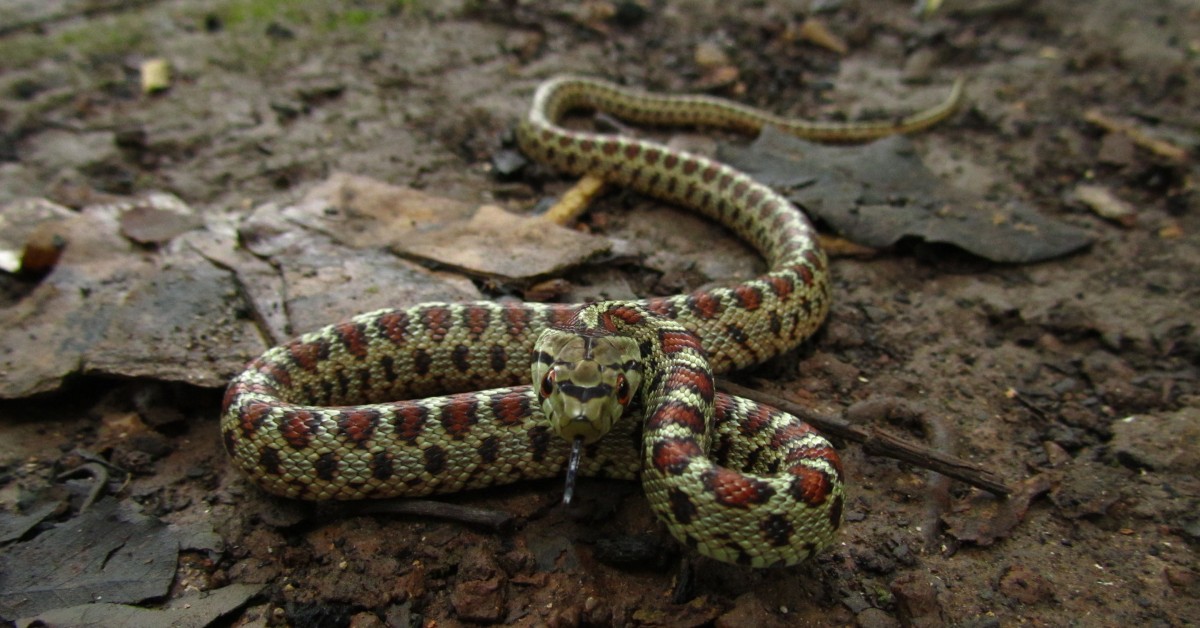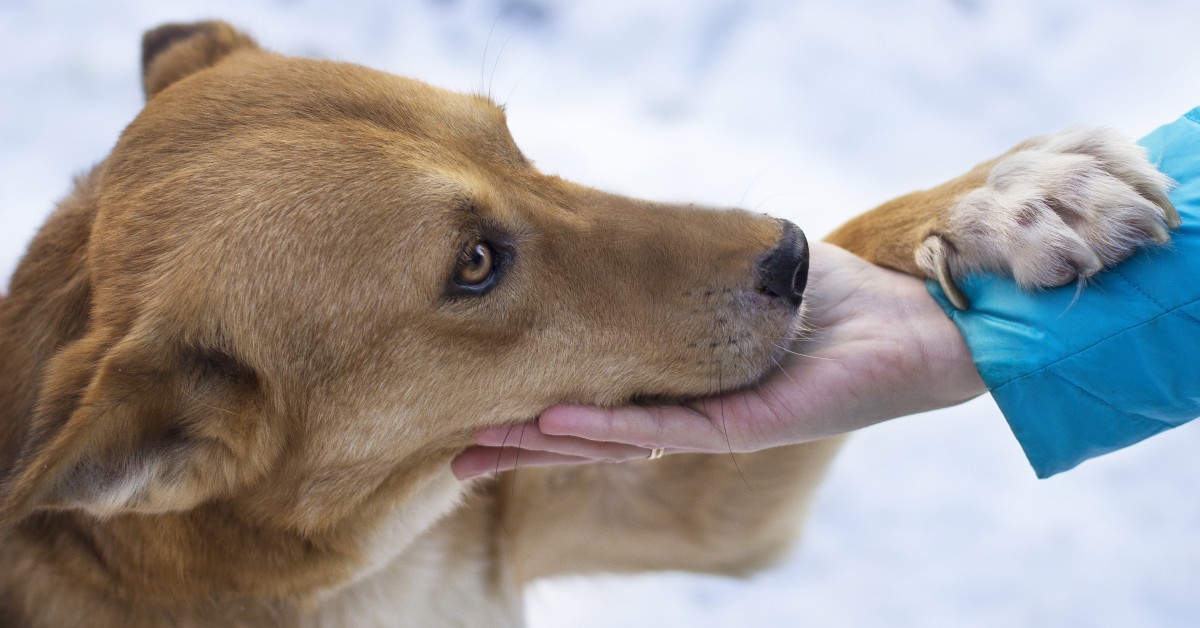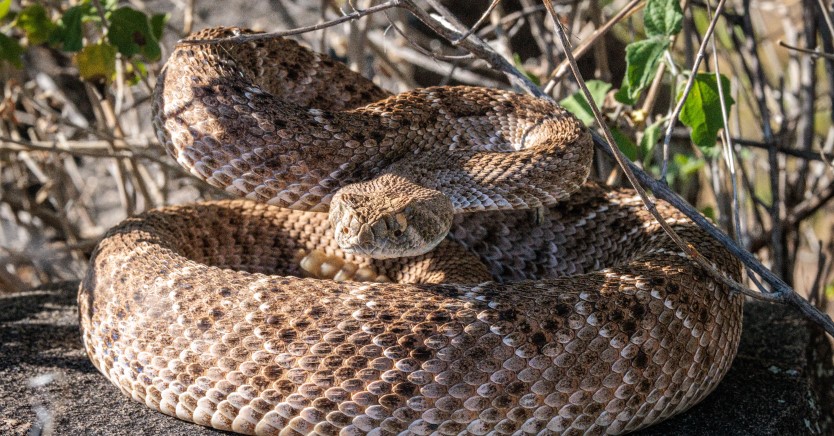Summertime Risks of Snake Bites for Dogs
Snake bites can be lethal to dogs, but knowing how to respond can save your pet’s life.

More than 150,000 dogs and cats suffer venomous snake bites in the United States annually, according to the Morris Animal Foundation. With prompt medical care, about 80 percent survive these bites. However, every minute counts when a snakebite occurs. As summer brings increased risks of snake bites for dogs, it’s essential to take the necessary steps to keep your pet safe. Let’s unveil some of these threats and go over how to respond if your dog experiences a dangerous snake bite.
Identifying Venomous Snakes in North America
There are approximately 3,000 species of snakes worldwide, but only around 600 are venomous. About 20 of these venomous species reside in North America. Whether you plan to do some hiking in your hometown or are traveling across the U.S. for an outdoor adventure, you’ll want to easily recognize potential hazards in the wild.
In North America, the most frequently encountered venomous snakes include copperheads, rattlesnakes, coral snakes, and water moccasins. Copperheads are most commonly spotted in the southeastern U.S. and are known for their distinct copper-red head. Rattlesnakes, on the other hand, can be found in western North America and are recognized by their diamond pattern and audible tail rattle.
Coral snakes are known for their yellow, bright red, and black bands. The most common variants can typically be found in Arizona, northern Mexico, Florida, North Carolina, Louisiana, Georgia, and the midwestern U.S. Water moccasins, otherwise known as cottonmouths, are semi-aquatic snakes that primarily reside in the southeastern U.S and can be spotted by their white mouths that open wide when threatened.
Avoiding Snake Bites to Keep Your Dog Safe
While there’s no way to completely avoid dangerous snakes when in the wild, you can drastically reduce the risk of you or your dog getting bitten by following a few simple tips:
Keep Your Dog on a Leash
Dogs allowed to run off leash are more likely to get bitten by a snake, as their curiosity can get the better of them, and they may get too close. Ensure that your dog knows basic commands, such as “come,” and teach your dog to walk alongside you where you can pay close attention to their surroundings.
Stay on Trails
Snakes are more likely to be discovered hidden in tall grass or high brush. By sticking to clear trails, you can minimize your risk of encountering one while hiking. If you’re concerned about snakes in your own yard, clear away brush and debris. Store firewood out of reach of your dog and keep the grass mowed short.
Don’t Interact with the Snake
If you happen to encounter a snake while you’re out with your dog, slowly back away and allow the snake to leave on its own. Remember, a snake can only strike half the distance of their total body length. Snakes found on your property should be removed by a wildlife control officer.
Responding to a Snake Bite Accident in Dogs
It’s normal to feel scared or even panicked when your dog gets bitten by a snake. However, it’s important to keep your composure and act fast to save your pet’s life. First, know what to look for.
Depending on the species of snake, there may be a visible bite with one or two puncture wounds. These wounds may trickle blood or other fluids. The area around the puncture marks will often be red and swollen, and your dog will usually show signs of pain or discomfort.
Snake bites that go untreated can result in a process known as necrosis, in which the tissue begins to turn black and die. The venom delivered into the bloodstream by the snake can also cause blood clotting issues, as well as neurological symptoms like seizures.
The faster you can get your pet to a vet after a snake bite, the better. If possible, carry your dog with the bitten area lower than the heart to slow down the spread of venom. Once at the vet, IV fluids will generally be administered as the vet tries to determine the most appropriate treatment.
An antivenom will be given to your dog based on the type of snake and the amount of venom injected. If you know the type of snake or have a photo available, this can speed up the process. If promptly treated, many dogs can recover from a snakebite within 24 to 48 hours. However, damage to deeper tissues or muscles may prolong recovery.
Once stabilized, your dog may need to be kept at the clinic for observation. During this time, your vet will monitor the animal for any signs of complications, such as necrosis. You’ll then receive instructions on how to continue caring for your pet at home, which may include administering medicines, wound care, and the placement of an e-collar to prevent further trauma to the wound area.
Keeping Your Dog Safe from Snakes this Summer
Close encounters with snakes are more common than you would think, especially if you and your pup spend a lot of time outdoors. Knowing how to handle these unexpected situations with swiftness and composure can help reduce the risk of more serious complications. With proper supervision and prompt veterinary care, you can help keep your dog safe from snakes this summer season.
Ready to start saving money on pet wellness care?
Then take a look at Mint Wellness, the pet wellness plan that provides fast reimbursement on routine pet care. Save on vaccinations, wellness exams, preventatives, dental, and more!
Learn More


